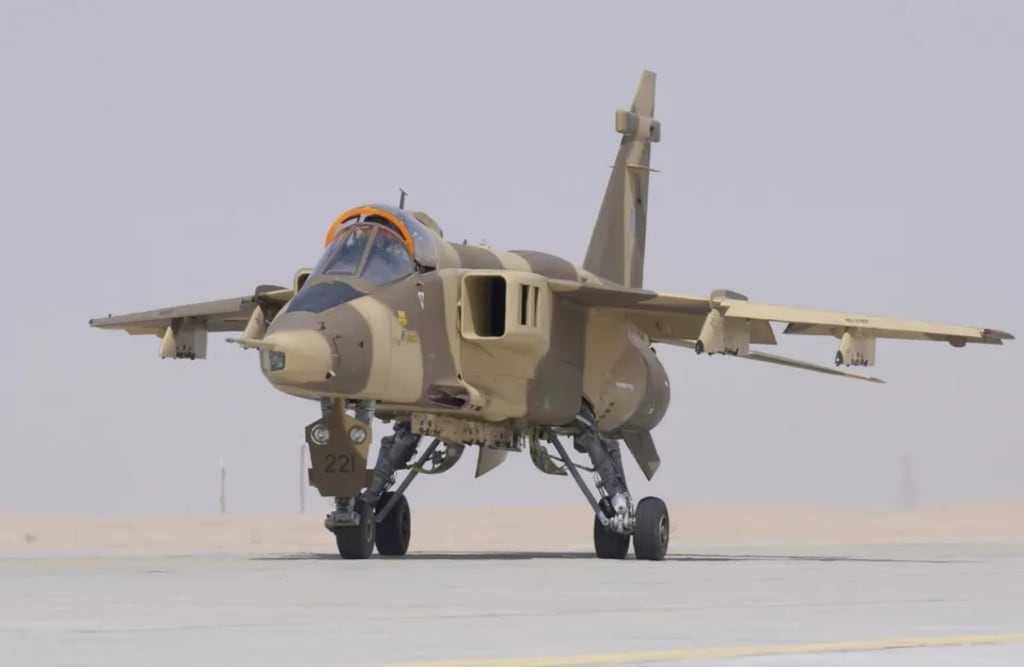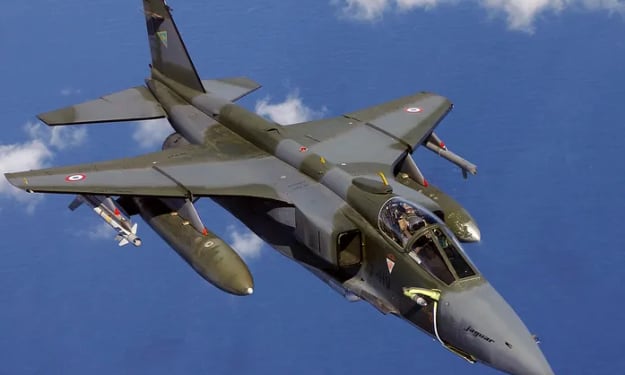The SEPECAT Jaguar: A Jet Trainer Turned Nuclear Attacker
The SEPECAT Jaguar

The SEPECAT Jaguar, a jet trainer originally designed to provide NATO forces with a multi-role platform, has come a long way since its inception in the mid-1970s. Not only did it become one of the most successful jet trainers in the world, but it also became a powerful nuclear attacker, providing NATO with a formidable nuclear deterrent. With its combination of agility, speed, and firepower, the SEPECAT Jaguar is a unique and versatile aircraft, capable of performing a variety of roles from training and reconnaissance to nuclear attack. Its ability to adapt to changing needs has seen it become an invaluable asset to many nations, and its long-term use and success make it one of the most important aircraft in military aviation history.
History of the SEPECAT Jaguar
The SEPECAT Jaguar was designed and manufactured by SEPECAT (Société Européenne de Production de l’Avion de Combat et d’Elicoptère) in the 1970s. It was developed in response to a joint request for proposals for a new jet trainer for the French Air Force and the British Royal Air Force. It was also intended to replace the French Navy’s Etendard IVM bomber/reconnaissance aircraft. In 1974, the deal was signed, and the two parties agreed to purchase a total of 1,225 aircraft. The original design specified three variants: a two-seat trainer, a single-seat interceptor and a reconnaissance aircraft. The first prototype flew on October 16, 1975, and the first production aircraft was delivered on March 23, 1979. The Royal Air Force received their first production aircraft in October 1980. The initial production version was the Jaguar ID, which was equipped with a navigation system and armament. The Jaguar B followed in 1981, which included improvements to the navigation systems and an autopilot. The Jaguar M, which was produced from 1982 to 1986, was a single-seat aircraft dedicated to reconnaissance missions. It was the first operational version that was equipped with a low-altitude navigation system.
Design Features of the SEPECAT Jaguar
The Jaguar was designed as a multi-role aircraft capable of performing a variety of missions, including high-speed low-level penetration, ground attack, and reconnaissance. It had a wide wingspan and large fuselage to provide stability during low-level flight. Its large wing area provided lift for takeoff and landing at high weights with low landing speeds. It also had an advanced avionics system with a wide range of sensors, display subsystems and communications equipment that allowed the Jaguar to perform a wide range of tasks and weather conditions. In addition to its heavy armament, it had an internal fuel capacity of 18,000 lb and external wing pylons to increase its fuel capacity.
Versatility of the SEPECAT Jaguar
The Jaguar’s versatility as a multi-role platform is perhaps one of the most notable characteristics of this aircraft. It is a heavy fighter aircraft capable of carrying a wide range of weapons, including air-to-air missiles, laser-guided bombs, and nuclear weapons. Despite its large size, its agility and speed allow it to perform low-level penetration and reconnaissance missions at high speeds. The Jaguar can also carry out air defense and interception missions, thanks to its ability to carry air-to-air missiles. The Jaguar’s versatility has allowed it to be used by many nations in a variety of roles. For example, while the British used the Jaguar mainly for reconnaissance, the French and Indian Air Forces deployed the Jaguar in a multi-role capacity, including ground attack, interception, and nuclear attack.
Combat Usage of the SEPECAT Jaguar
The first Jaguar ID aircraft were delivered to the French Air Force in 1979, and the first Jaguar B was delivered in 1981. The Jaguars participated in combat operations during the Gulf War in 1991, the Yugoslav Wars in the 1990s, and the War in Afghanistan (2001–2014). During the Gulf War, the Jaguar was primarily used for reconnaissance, but a small number of aircraft were also used for ground attack and air defense. Three aircraft suffered damage from ground fire, but there were no casualties. The Yugoslav Wars saw the Jaguar used mainly for reconnaissance and ground attack; again, a few aircraft were used for air defense. The majority of the air force was deployed in France, but a small number was also deployed to operate from Italian bases. In Afghanistan, the Jaguar was primarily used for reconnaissance. The Jaguars have also been used during many training exercises throughout the world, including in Australia, Canada and the United Kingdom.
Nuclear Attack Capabilities of the SEPECAT Jaguar
The Jaguar was designed to be a multi-role aircraft, but given its design and unique characteristics, it was most suitable for low-level attack missions. In fact, it was the French Air Force’s initial intention to turn the Jaguar into a ground attack aircraft. However, the two countries had different views on the role of nuclear weapons, and the British sought to replace Jaguar’s conventional ground attack capabilities with a nuclear attack capability. These differences in views led to the development of two versions of the Jaguar aircraft: the Jaguar IA for the French Air Force and the Jaguar IB for the British Royal Air Force. The Jaguar IA was equipped with conventional munitions and was used to perform low-level penetration, reconnaissance, and ground attack missions. The Jaguar IB was a nuclear-capable version that was used for low-level penetration, reconnaissance, and nuclear attack missions. The Jaguar IB was equipped with a Taurus (“Bull”) nuclear bomb that weighed 2,000 lb and could be dropped from low altitudes. The Jaguar could carry up to three Taurus nuclear bombs.
Impact of the SEPECAT Jaguar on Modern Aviation
The Jaguar’s versatility, long service life, and unique characteristics have made it an invaluable asset to many nations and a significant contributor to military aviation history. The Jaguar has been a highly successful jet trainer, providing the air forces of France, Britain, and India with a multi-role aircraft that can be used in a variety of roles, including reconnaissance and nuclear attack. Its versatility has ensured that the Jaguar will continue to remain an important part of the aviation landscape, and its role in providing a nuclear deterrent to NATO will remain a key part of its history. The Jaguar has also provided a stepping stone for the development of other military aircraft, such as the British Hawk and the French Rafale. Most importantly, the Jaguar has proven to be a valuable asset, and its longevity has made it one of the most important military aircraft in history.
Conclusion
The SEPECAT Jaguar is a unique aircraft with a long and successful history. It was designed as a multi-role aircraft and has proved to be a valuable asset, providing many nations with a sophisticated and versatile aircraft that can be used for a variety of tasks, including reconnaissance and nuclear attack. The Jaguar’s versatility and longevity have made it an important part of military aviation history, and its role in providing a nuclear deterrent to NATO will remain a key part of its history.
About the Creator
planehistoria
PlaneHistoria is a resource documenting a variety of aircraft from the terrifying contraptions of the past to the amazing and bizarre aircraft of today, such as the General Dynamics F-16.






Comments
There are no comments for this story
Be the first to respond and start the conversation.